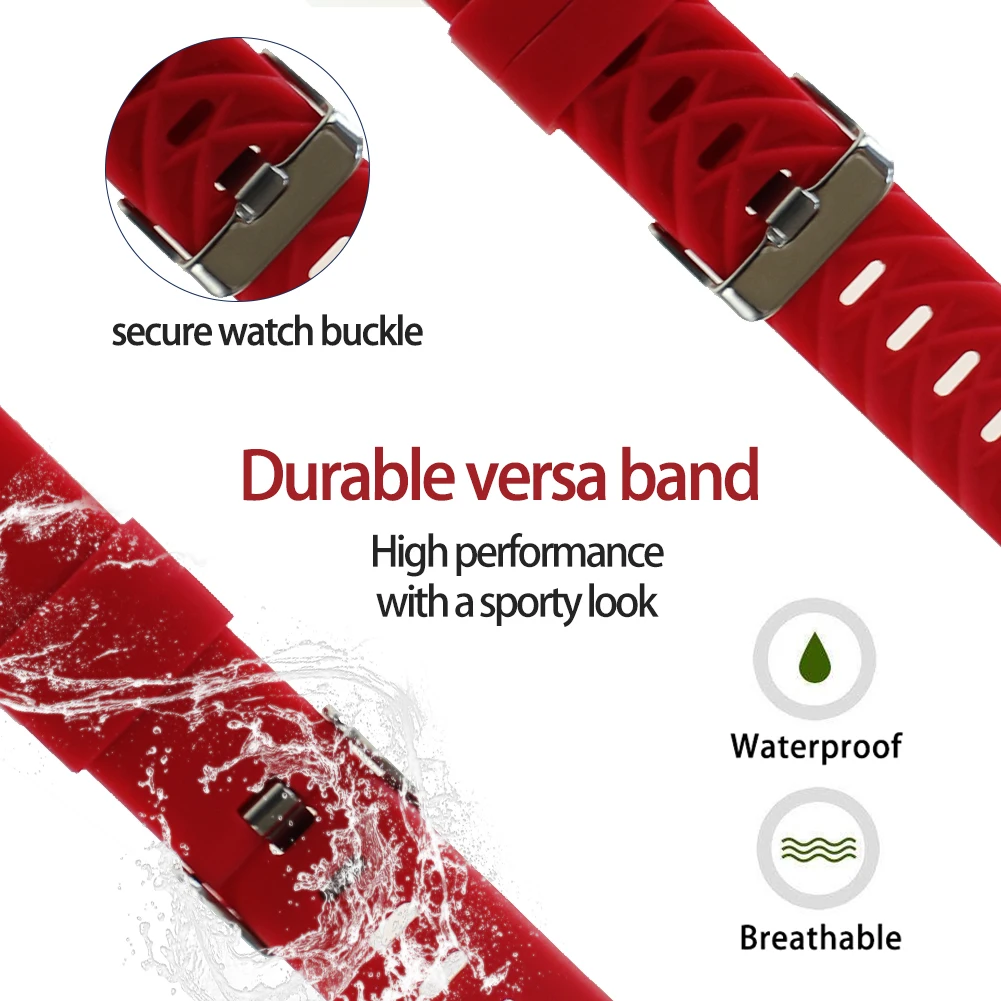

Swiping left or right scrolls through each of the Versa 4's standard features like daily steps, heart rate, stress levels, and more. Navigating the screen requires the same touchscreen controls as before, with a swipe up populating any notifications, while a swipe down allows access to features like brightness control or Do Not Disturb. It has the same 1.58-inch AMOLED display as the Versa 3, as well as the same resolution. I also found both the display and the text on the display easy to read and navigate, even at a glance, no matter if I was jogging on a treadmill, riding my bike, or sitting at work. This is especially noticeable (or, more accurately, not noticeable) when I exercised, as it hardly felt like I had a wearable on at all. Overall, it has a thin, lightweight design that looks and feels minimal. The design of the Fitbit Versa 4 is nearly identical to the Versa models that came before it, featuring a square watch face with curved edges. The design of the Fitbit Versa 4 is nearly identical to that of the Versa 3, though it does now feature a single physical button on the side that can access some of the watch's features, as well as Amazon Alexa. While I found it to be somewhat of a well-made activity tracker, its shortcomings were apparent far too often. To get the full Versa 4 experience, I spent the better part of a month using it as my everyday wearable. Versa 3 owners don't benefit from an upgrade, and it'd be hard to convince any wearer of an Apple, Garmin, or Suunto watch to embrace a new ecosystem for something this lackluster. It's such stagnant innovation that also makes it hard to pin down who exactly benefits best from wearing one. What's more, the Versa 4 actually drops key features that made the Versa 3 great, including third-party app support and onboard music playback.
And while the Versa 3 is one of the best Fitbit devices you can buy, the fourth-gen does little to push the line forward is disappointing. It features the same lightweight, minimalist design of Versas past, as well as a diverse array of trackable activities, a nearly week-long battery, and an upgraded version of Fitbit's stress-management tools.īut even those positive aspects feed into the Versa 4's main sticking point: Much of what the watch does was lifted directly from the Versa 3. This puts the Versa 4 in a tough spot in Fitbit's lineup, even though it has some appeal. While the number four suggests a generational advancement over the Versa 3, the wearable is instead an almost-carbon copy that pales in comparison to the company's other offerings, like the Sense 2 or the Google Pixel Watch. If you're expecting the Fitbit Versa 4 to be one of the best fitness trackers, or even an upgrade over its predecessor, you'll likely be disappointed.


 0 kommentar(er)
0 kommentar(er)
